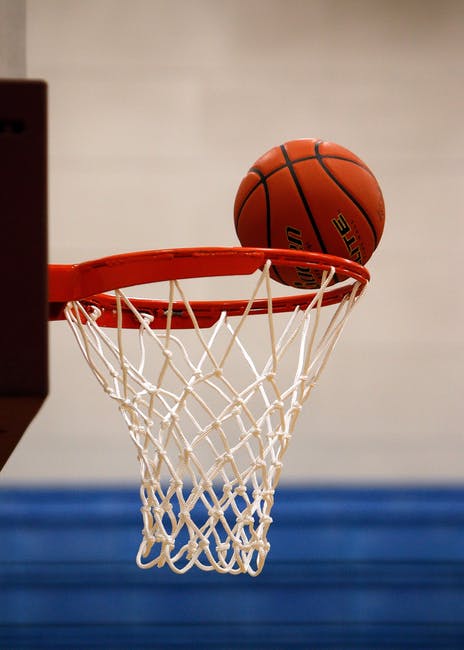
What is a carry?
Since late 2022, the NBA has been much more strict about enforcing its “carrying” rules than ever before. Even in the first game after its new focus on this area of the rules, a single player received three violations, confusing many viewers. Though, could you even answer the question, “What is a carry in basketball?”
Below, we offer all the information you might need to get up-to-speed on this newly-enforced area of the game. While the NBA is looking at it more, other leagues are also watching to see how this new attitude turns out. So, expect this knowledge to come in handy in the years to come.
What Is a Carry in Basketball?
When learning how to play basketball, one of the first things many people receive instruction on is how to avoid “Carrying”. This act occurs when a player moves a ball in such a way that they appear to be supporting it in their hand. Though, the exact nature of this rule has various details, especially when it comes to defining the specific sports terms involved.
The Exact NBA Carry Rule
In basketball terms, the NBA defines the violation of “Carrying” as:
Section II (c): “A player who is dribbling may not put any part of his hand under the ball and (1) carry it from one point to another or (2) bring it to a pause and then continue to dribble again..”
This is an illegal action, and results in the ball coming to rest, then moving again. This goes against the spirit of the ball always being in motion once per player who controls it.
There are specific times when a player may dribble a second time as defined in the rules. These all relate to losing control of the ball in specific ways, before attempting to regain it. If the player carries outside of this, though, the referees will award the ball to the opposing team on the sideline close to the violation.
What Is the NBA’s Definition of Dribbling?
To understand basketball violations, one must also know what the expected behavior should instead be. For example, a dribble to them is any movement of the ball a player causes when they throw or tap the ball to the floor. The dribble then ends when the player either throws the ball, stops the ball’s movement, or touches the ball twice per bounce.
This rule intends to create a period of continuous motion that defines possession of the ball. By having possession, the person dribbling is on “offense”. From here, the rules expect them to make a tactical decision about their next course of action, and dribbling keeps the ball in a hard-to-defend state.
The dribbler is always the focus of the game, being the one holding the ball. They control the asset used to score and can choose to either pass, dribble more, or shoot. This has the name of being a “triple threat”, as they could perform any of the three actions and the defender must be aware of every possibility.
What Turns Dribbling Into Carrying?
There is a fine line between legal dribbling and carrying when playing basketball. As a “carry” often occurs when a hand touches the bottom of the ball, preventing it from bouncing, players who carry can gain unfair control over the ball.
This rule exists because it interferes with the fluid nature of the game and can often give a player an unfair advantage. Carrying helps the player maneuver the ball, stopping the other team from taking advantage of the constant movement of the game.
How Referees Make a Ruling
A referee’s arbitration ensures the game remains a trusted sport, and they follow the official rules whenever possible. This includes rules related to carrying, especially since November 2022 when they started enforcing them more often.
Identifying a Carry
When players move around, referees watch out for specific cues that might give off the fact a player carried the ball. These might include the player’s hand dropping below the ball at some point during dribbling. Another example would be a sudden and advantageous change in the ball’s movement because of where the player has placed the hand.
Referees will also watch the dribble occurring during gameplay. If the ball maintains a constant motion when not held, they can assume it is not carried. Should this momentum suddenly change, they may make a judgment about what occurred related to a potential carry.
The Referee’s Reaction
When the violation occurs, a referee will stop the game. They will inform all involved of the violation, and award the ball to the other team. They will do this to return the game to its natural flow as soon as possible.
Punishments and Reaction to Carrying
Carrying does not result in any long-lasting harm to the player or their team. While the ball passes to the opposing team’s possession and could lead to an advantage for their players, no player faces ejection from the game.
Committing several carries, though, is likely to create a sense of internal stigma. The player will start to gain a reputation, and their team may no longer trust them to follow the rules.
The History of Carrying
The rules about carrying have evolved over time. This shaped how people played the game and led to today’s ruleset.
The Origins of Carrying
The earliest basketball rules, by Dr. James Naismith, included five core principles of basketball. One of these was that “A player cannot run with the ball”.
This conceptual game was enough of a success that he developed a full set of thirteen rules, although at that time there were no rules for dribbling. It only stated that players must never run with the ball, but that they can throw it.
How Carrying’s Definition Changed Over Time
For a long time, this game remained as it is, and was very much like the modern game of “netball”, with players not moving when they had the ball. Soon enough, players found the loophole of “passing to themselves”. While some may have seen this move as unfair, Naismith endorsed it as an ingenious tactic.
Over time, this method of passing evolved into smaller and smaller passes, until it became closer to the dribbling we see today. In fact, dribbling was a very popular method of movement among both players and coaches. So popular that in 1927, the National Association of Basketball Coaches (NABC) formed in part to oppose a push to drop dribbling from the sport.
After this, not much changed, although around the ’80s and ’90s, players started seeing more of a relaxed attitude toward dribbling. Players had developed new methods of dribbling for a while, but over time people started to notice carrying did not receive a reprimand. Some believe this may have had something to do with the celebrity status of players and the sport wanting to build player brands.
In 2022, though, while the rules did not change, the level to which the referees enforced them increased. This sped up the game, preventing one player from keeping the same high level of control over the ball and increasing the likelihood of steals.
How the Carrying Rule Influences the Game
Many people believe that the carry rule goes beyond simple advantages when dribbling. As it pushes players to improve their dribbling skills, it also aids in the development of advanced basketball techniques. These might include crossovers, spins, and other useful movements.
Carrying also limits the amount a single player must rely on the rest of their team to succeed. As such, it reduces the amount of strategy players must consider during a single game. Through enforcement, the carrying rule promotes an attitude toward including the whole team in the goal of scoring a basket.
Learning How Not to Carry
Teaching people how not to carry, and learning not to do it yourself, can ensure you are well-respected on the basketball court. It is a crucial part of the game and, as such, practicing to dribble legally will improve your skill in many ways.
When learning to dribble, make sure to maintain a natural rhythm, without pausing or altering the movements of the ball. Do this for long periods of practice, and start to add small movements that emphasize legal ball control and hand placement. Over time, you can then add advanced skills to this, as well as ask others for coaching or advice, to gain further insight into improvement.
Learning More About the Great Game
With all the above information, you might well be able to school the next person who shouts at the television and criticizes a referee. Though, this may only be the start of your journey.
On top of fielding questions such as “What is a carry in basketball?”, we can expand your knowledge of this sport to help you appreciate it like never before. Now might be the time for you to visit us, so check out our current location and prepare to learn more about basketball than you ever thought possible.
Related Articles
Related
2024 Annual Hall of Fame Luncheon in Cape Coral, Florida.
Relive the thrilling victories and iconic performances in Fighting Illini men’s basketball history, celebrating their legacy in the Big Ten and beyond.
The Impact of Rule Changes in Professional Basketball
Relive the thrilling victories and iconic performances in Fighting Illini men’s basketball history, celebrating their legacy in the Big Ten and beyond.
Top Moments in Illiniois Women’s Basketball History
Relive the thrilling victories and iconic performances in Fighting Illini men’s basketball history, celebrating their legacy in the Big Ten and beyond.
